37th ISSR Conference – Taipei (Taiwan), 4-7 July 2023.
Religions in dialogue: Transformations, Diversity, and Materiality
In contemporary times, religion is undergoing critical change as part of processes of individualization, deinstitutionalization, and mediatization. The “classical” elements of religion, such as beliefs and rituals, are increasingly differentiated from one another, and the mobilization of religious identities takes different shapes in the global context. The responses of people’s religious, spiritual and nonreligious lives to these changes are broader, more complex, and more rapid than those of religious organizations. The transformation of people´s diverse worldviews also intersects with global challenges occurring in ecology, health, inequality, and diversity. These developments have resulted in a scholarly need to move away from simple, binary Northern/Western perspectives towards a more decentered scholarship. This is SISR/ISSR´s first conference in Asia and we welcome scholars who study the complex interrelations and dialogue of religious, spiritual and nonreligious worldviews, materiality, aesthetics, and diversity in light of global changes.
Call for sessions: 4 July – 1 September 2022.
Call for papers: 15 October – 9 December 2022.



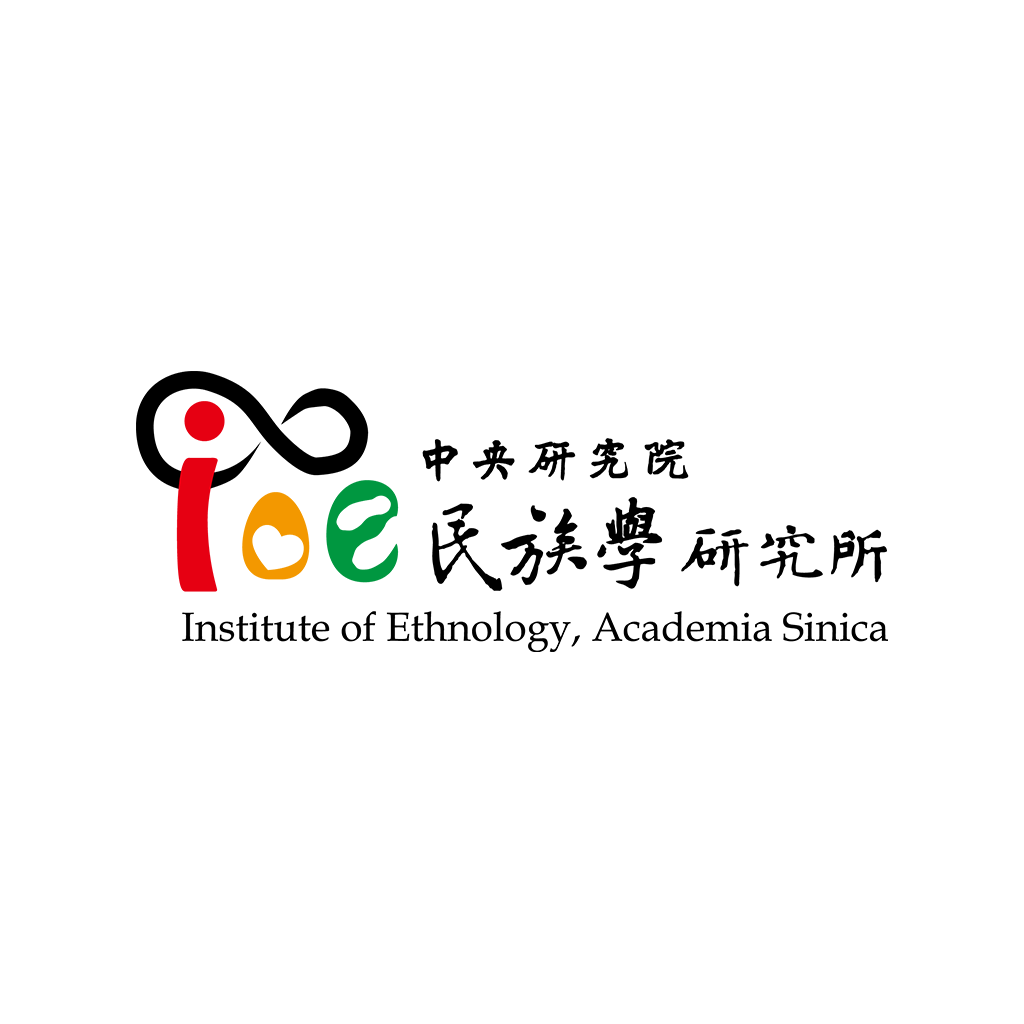

Religions in dialogue: Transformations, Diversity, and Materiality
In contemporary times, religion is undergoing critical change as part of processes of individualization, deinstitutionalization, and mediatization. The “classical” elements of religion, such as beliefs and rituals, are increasingly differentiated from one another, and the mobilization of religious identities takes different shapes in the global context. The responses of people’s religious, spiritual and nonreligious lives to these changes are broader, more complex, and more rapid than those of religious organizations. The transformation of people´s diverse worldviews also intersects with global challenges occurring in ecology, health, inequality, and diversity. These developments have resulted in a scholarly need to move away from simple, binary Northern/Western perspectives towards a more decentered scholarship. This is SISR/ISSR´s first conference in Asia and we welcome scholars who study the complex interrelations and dialogue of religious, spiritual and nonreligious worldviews, materiality, aesthetics, and diversity in light of global changes.
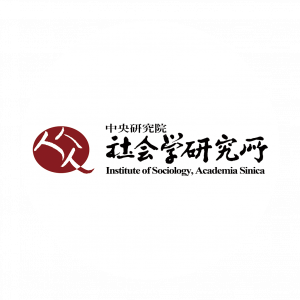

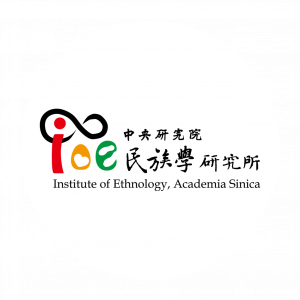
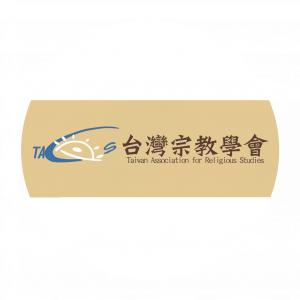
Conference Program
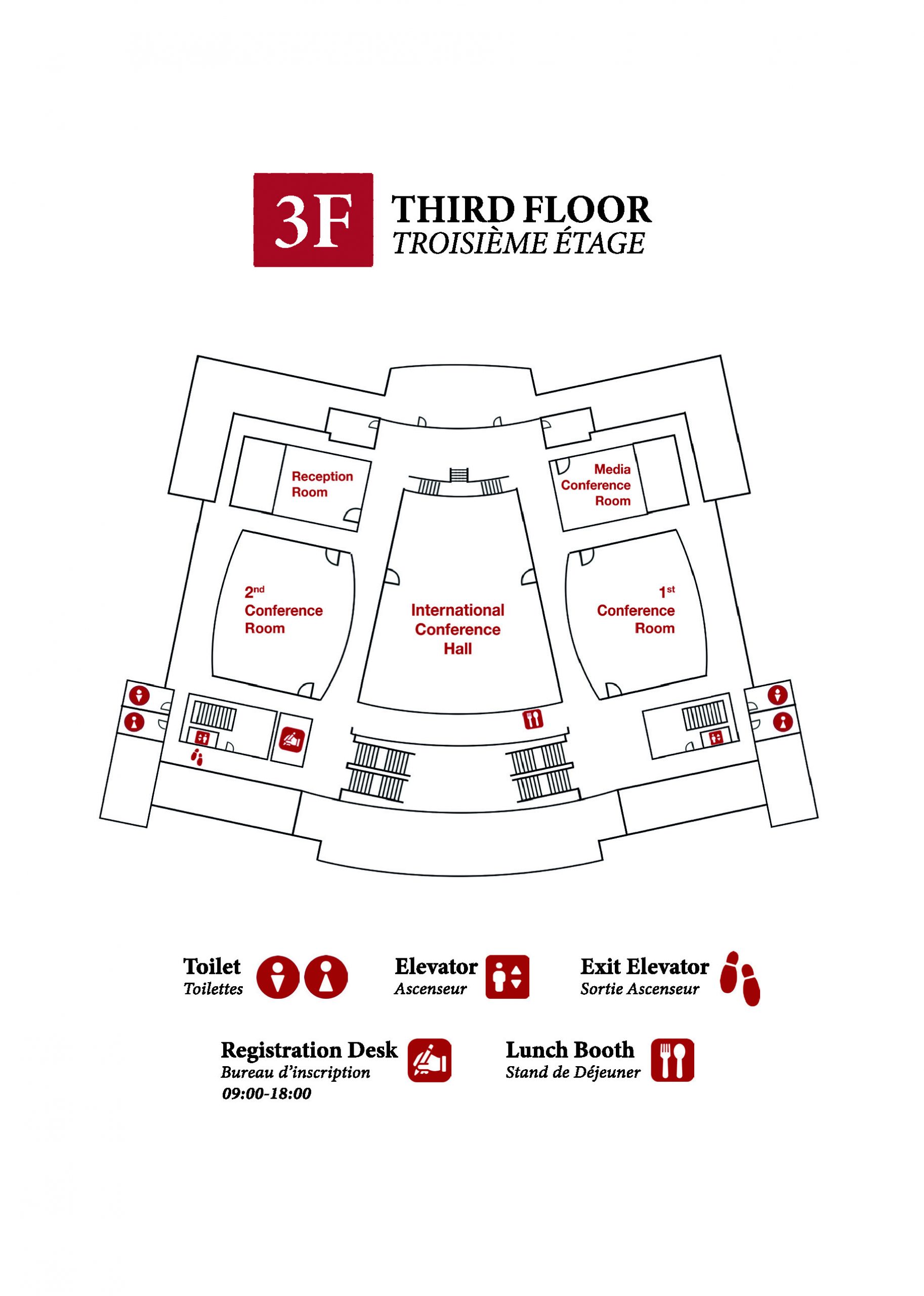
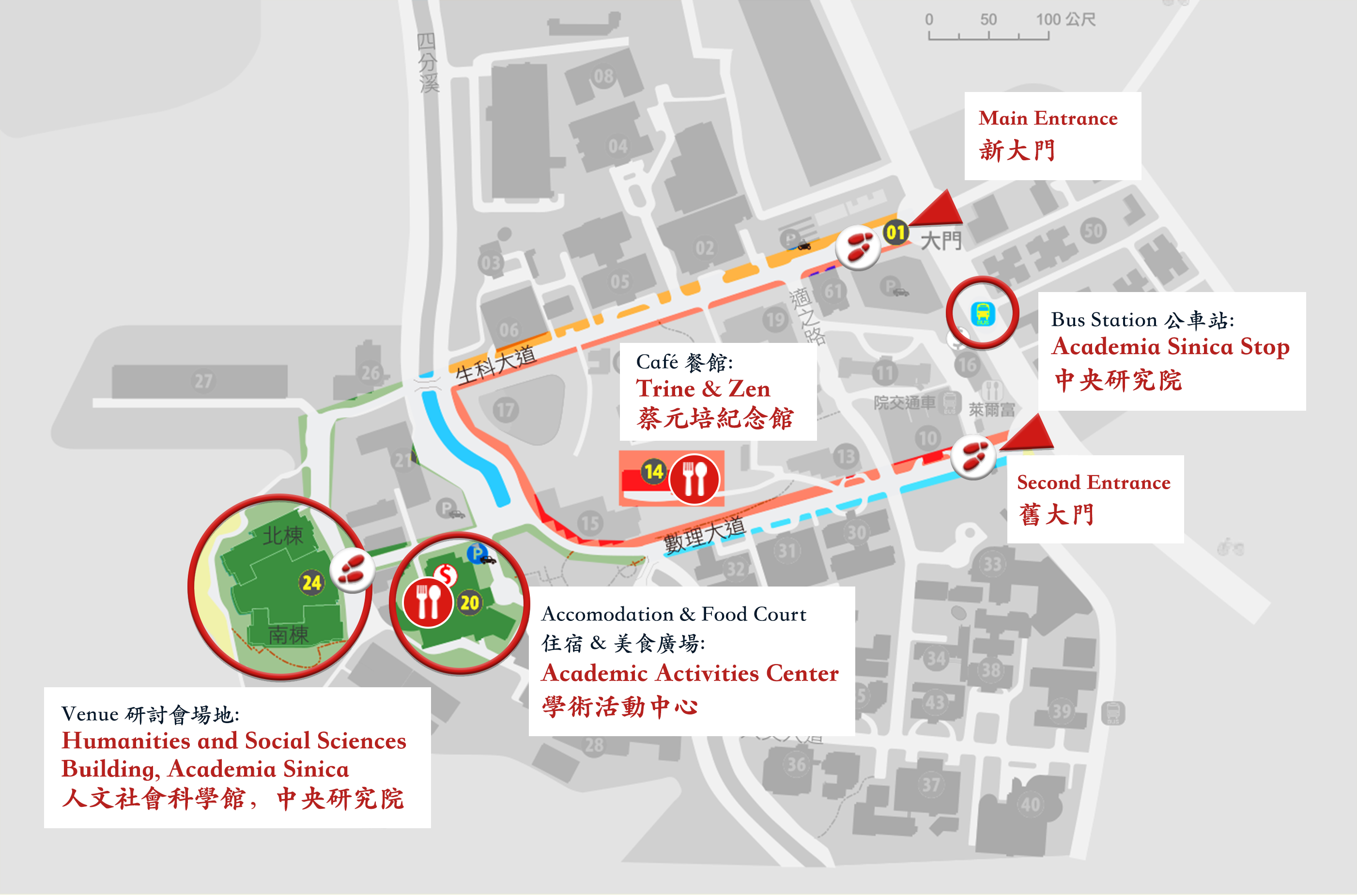
The registration desk is located inside the venue (see the map), on the 3rd floor of the South Wing of the Humanities and Social Sciences Building of Academia Sinica. During the conference, the service time of the registration desk is from 09:00 to 18:00. The registration desk provides the register inquiry, conference information inquiry, payment or refund of Cultural Tours, and print service as well.
Before the opening panel and each plenary, you can borrow an interpreter machine in front of the International Conference Hall. Our team will record your name and mobile phone number while you borrow earphones. Please return the headphones when you leave the hall after the speech.
During the conference, you have different options for lunch.
1. Restaurant: In front of the venue building, you will find a Chinese restaurant where you can order lunch boxes for a quick meal or enjoy a delicious meal if you have more time.
2. The Academic Activities Center is located in front of the venue building (see the map), where there is a lunch court. Unfortunately, the lunch court is undergoing reorganization during the conference, so the variety of options is very limited.
3. Due to the limited choices in the aforementioned lunch court, for the convenience of everyone, we have prepared some lunch food with local flavors inside the venue (see “food booth” on the map). Each meal is priced at 100 NTD (approximately 3 Euros) and need to be paid on-site.
4. If you have more time, you can also take a five-minute walk to the café (see ‘Trine&Zen’on the map), where you can enjoy light meals, sandwiches, and spaghetti.
Conference Fees
| ISSR Members |
| Full members | 140 euros |
| Members with reduced fees (*) | 70 euros |
| Non-members (**) | 170 euros |
(*) members from countries with non-convertible currency, students, retired colleagues, unemployed and partners of full members.
(**) Non-members assisting without presenting a paper. Non-members presenting a paper have to be member in 2021-23, they have to pay the membership fees by the deadline on the website; at the latest at their arrival at the conference site for exceptional cases with non-convertible currencies.
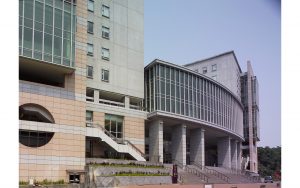
Humanities and Social Sciences Building, Academia Sinica, 128 Academia Road, Section 2, Nankang, Taipei 11529, Taiwan
Transportation Guide |
From Taiwan Taoyuan International Airport to Academia SinicaDirect transportation: Taxi Price: NT$ 1400-1600 (€1=NT$34) Trip length: 50 min Google Map: From Taiwan Taoyuan International Airport to Academia Sinica Non-direct transportation: Taoyuan International Airport – Taoyuan THSR Station – Nangang THSR Station – Academia Sinica Taoyuan International Airport – Taipei Main Station– Taipei Nangang Exhibition Center – Academia Sinica Option 1: Taoyuan International Airport – Taoyuan THSR Station – Nangang THSR Station – Academia Sinica 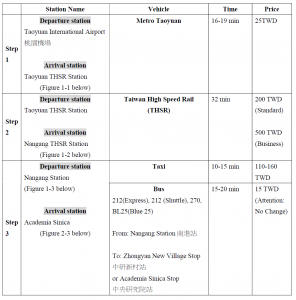
Option 2: Taoyuan International Airport – Taipei Main Station– Taipei Nangang Exhibition Center – Academia Sinica 
|
|
|
INNER CITY Connection to Academia Sinica |
MRT+BUS - Nangang Station (BLUE LINE) → Exit No.2, turn left → Buses 212 (Express/Shuttle), 270 or BL25 → “Academia Sinica” Stop.
- Taipei Nangang Exhibition Center Station → Exit No.5, cross the street → Buses 212, 276, 306, 620, 645, 679, 205, S5, S1、S12 → “Academia Sinica” Stop.
|
| Bus to Academia Sinica Anywhere with Bus number 205、212、212 (Express)、212 (Shuttle)、270、276、306、620、645、S12、BL25、679、S5、S1、CB7 for getting off at “Academia Sinica” Stop. |
| Bilingual Map for MRT
|
Academia Sinica Go‘Academia Sinica Go’ APP combines the geographical map with information on academic activities and daily services, to help visitors navigate their way around campus. Google Play Download

 | | App Store Download

 |
|
Emergency contact information while requested by immigration:
Adresse: No. 128, Sec. 2, Academia Rd., Nangang, 115 Taipei
Phone Number: Office: 02-26525150 Mobile phone: 0919-654720
From Taiwan Taoyuan International Airport to Academia Sinica
Direct transportation: Taxi
Price: NT$ 1400-1600 (€1=NT$34)
Trip length: 50 min
Google Map: From Taiwan Taoyuan International Airport to Academia Sinica
Non-direct transportation:
Taoyuan International Airport – Taoyuan THSR Station – Nangang THSR Station – Academia Sinica
Taoyuan International Airport – Taipei Main Station– Taipei Nangang Exhibition Center – Academia Sinica
Option 1:
Taoyuan International Airport – Taoyuan THSR Station – Nangang THSR Station – Academia Sinica

Figure 1-1
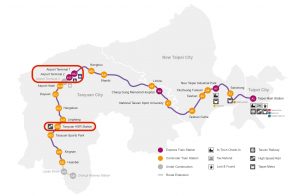
Figure 1-2
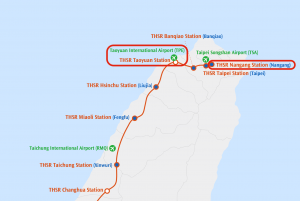
Figure 1-3
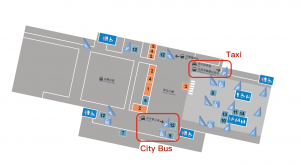
Option 2:
Taoyuan International Airport – Taipei Main Station– Taipei Nangang Exhibition Center – Academia Sinica

Figure 2-1

Figure 2-2

Figure 2-3

Accommodation
(*If you need to check the venue’s location, please browse “Locations and Venues” page.)
(Location: Close to the venue, 3 minutes walk. About 25 minutes by subway to the city center.)
(Location: Nearby National Taiwan University (NTU). About 40 minutes by subway & bus to the Venue.)
Howard Civil Service International House will provide 35 rooms, including 15 one-single-bed rooms, 10 two-single-beds rooms, and 10 Queen-size-bed rooms during the conference.
Please use this reservation code “RLC22408” to reserve the room and discount assuredly, when you decide to book before May 19, 2023.
(Location: Nearby NanGang Metro Station, Blue Line, Taipei Metro. About 10 minutes by bus to the Venue.)
(Location: Nearby Zhongxiao Dunhua Metro Station, Blue Line, Taipei Metro. About 20 minutes by subway & bus to the Venue.)
(Nearby Ximen Metro Station, Blue Line, Taipei Metro. About 40 minutes by subway & bus.)
(Nearby NanGang Software Park Metro Station, Brown Line, Taipei Metro. About 10 minutes by subway & bus to the Venue.)
(Nearby Nanjing Fuxing Metro Station, Brown Line, Taipei Metro. About 40 minutes by subway & bus to the Venue.)
(Nearby Daan Park Metro Station, Red Line, Taipei Metro. About 40 minutes by subway & bus to the Venue.)
€120 and above per night:
(Nearby Zhongxiao Fuxing Metro Station, Blue Line, Taipei Metro. About 20 minutes by subway & bus to the Venue.)
(Nearby NanGang Software Park Metro Station, Brown Line, Taipei Metro. About 10 minutes by subway & bus to the Venue.)
The reservation in July will open on The Place Taipei’s official website after May 2023. We suggest you send an e-mail (rsvn@ng.hotelroyal.com.tw) for a reservation.
(Nearby NanGang Metro Station, Blue Line, Taipei Metro. About 10 minutes by bus to the Venue.)
The history between the Kuomintang and the Communist Party contributed to the relocation of National Palace Museum (NPM) artifacts to Taiwan and the artifacts subsequently becoming a crucial part of Taiwan’s culture. A review of the NPM’s history shows that it has inherited China’s national culture spanning thousands of years and shoulders the responsibility of preserving and publicizing artifacts. Most of the artifacts from the NPM’s collection came from Preparatory Department of the National Central Museum. Of the said artifacts, the majority was previously owned by the Jehol and Shenyang temporary palaces. This signifies that the NPM’s current artifact collection contains Qing court artifacts from The Palace Museum, the Jehol temporary palace, and the Shenyang temporary palace.
Current exhibition:
Splendors of the Biblioteca Apostolica Vaticana
and
Rare Books from the Ming and Qing Imperial Libraries
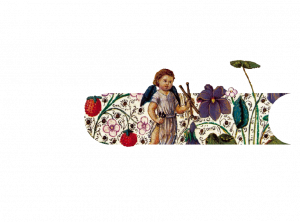

Northern Branch Exhibition Area
Galleries 103, 104
March 11 – July 16, 2023
Introduction
The Bibliotheca Apostolica Vaticana is the library of the popes. Inaugurated in the mid-15th century, it was conceived as an institution “for the common convenience of learned men (pro communi doctorum vivorum commodo),” one “of all manuscripts in both Latin and Greek that is worthy of the dignity of the Pope and the Apostolic See (liborum omnium tum latinorum tum grecorum bibliotecam condecentem pontificis et sedis apostolicae dignitati).” Today, it is arguably one of the largest and most important research libraries in the world. Known for its collections of manuscripts and early printed books, the Bibliotheca’s holdings encompass, apart from theological and religious works, a wide array of disciplines, from literature, history and art to law, philosophy and sciences. It is recognized as the “Attic of Civilization” and “Memory of Mankind.”
The development of China’s imperial libraries of the Ming and Qing dynasties, remarkable for the wealth of their collections, were contemporaneous with that of the Bibliotheca Apostolica Vaticana. Surpassing all of its predecessors in size of holdings, the Ming court library incorporated the imperial collections of books from the Song and succeeding dynasties, enriched with lost titles acquired by imperial agents dispatched across the land as well as works produced and printed by official organs. The Qing court, inheriting the legacy, continued to expand the scope of the collection on a comprehensive scale. Further boosted by the cultural enterprises of the High Qing and augmented by the output of an active imperial printing bureau, the book collections housed at the palaces and pavilions in the Forbidden City became increasingly richer, thus ushering in an unprecedented period of great prosperity in the annals of China’s imperial libraries.
The organization of the dual exhibitions of Treasures from the Bibliotheca Apostolica Vaticana and Rare Books from the Ming and Qing Imperial Libraries marks the first presentation at the National Palaced Museum of invaluable Western and Chinese antiquarian texts in their respective historical and cultural context. It is intended to help the audiences garner an in-depth understanding of the differences and similarities in the kind of book culture nourished by the Roman Curia and the Chinese imperial courts. The Treasures from the Bibliotheca Apostolica Vaticana is chronologically arranged, and, with an overview of the titles and artifacts that entered the collections in various phases, the viewers are introduced to the history of the Bibliotheca from its founding to the present day. The complementary Rare Books from the Ming and Qing Imperial Libraries, on the other hand, highlights a selection of the finest works collected, compiled and printed by the imperial courts of the two dynsties, through which an account of the development of the Ming and Qing imperial libraries as well as their holdings and characteristics is delivered.
Address: No.221, Sec. 2, Zhishan Rd., Shilin Dist., Taipei City 111001, Taiwan
Phone number: +886-2-2881-2021
Hours: Open from Tuesday to Sunday between 09:00 and 17:00. Closed on Mondays
Admission: Regular Ticket NT $350
Further information: https://theme.npm.edu.tw/exh112/BAVrarebooks/en/index.html
Tour Information
Cultural Tours
The following cultural tours are planned by the ISSR Conference 2023 Taipei Local Committee and will take place during and the day after the conference.
Taipei Temple Route
On this tour, we will visit several representative and historically significant temples in Taipei. We will see the Confucius Temple, Buddhist temples and a famous and popular temple near the city center. Sites of interest include Baoan Temple (an inductee of the UNESCO Asia-Pacific Heritage Awards for Culture Heritage Conservation), Linji Huguo Temple, and Shuiyue Temple. On this walking tour, you will have the opportunity to experience Taiwan’s multi-religious culture, the atmosphere of its rituals, as well as many different styles of beautiful religious architecture.
Date: 2023/7/8
Duration: 3 hours (9:00 am-12:00 noon)
Tour mode: Walking & subway
Cost: 10 euros
Maximum number of participants: 25 people
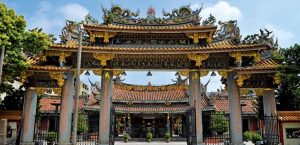
Monastery Route
This tour takes us to Dharma Drum Mountain, one of the most well-known and representative humanistic Buddhist monasteries in Taiwan. At the Dharma Drum Jinshan campus we will experience the practice of tea meditation, taste a Buddhist meal and soak in the peaceful atmosphere of the monastery grounds near the north coast. You will find ample opportunity to learn about the programs and ideas of this influential humanistic Buddhist monastery.
Date: 2023/7/8
Duration: 5 hours (8:00 am-1:00 pm)
Tour mode: Tour bus
Cost: 20 euros
Maximum number of participants: 30 people

Old Taipei History and Culture Route
This tour takes us to Dihua Street, a historic market street in what was once the heart of Taipei. During our visit, you will have the opportunity to experience the traditional treasures offered by a variety of shops such as tea stores, cloth stores, art stores and more, all housed in charming buildings from a bygone era. You will have the opportunity to taste and smell local teas and delicacies, see and touch beautiful wares and souvenirs, and listen to ancient Nanguang folk music (https://en.wikipedia.org/wiki/Nanguan_music). This tour will stimulate all your senses as you experience the vibrant culture of old Taiwan.
Date: 2023/7/8
Duration: 3.5 hours (11:00 am-2:30 pm)
Tour mode: Walking
Cost: 15 euros
Maximum number of participants: 25 people
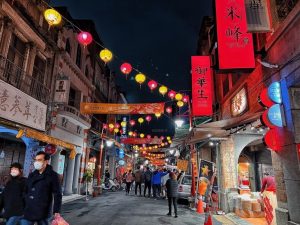
Hotspring Route in Bei-tou, Finding Harmony between Man and Nature:
On this tour, we’ll visit a hot spring bathing district developed during the Japanese colonial period. There is a natural geothermal pond, a Japanese bathhouse built in the Roman style (Beitou Hotspring Museum, that is now a museum, and a Japanese Buddhist temple. In addition, creative architecture (such as the local public library) has been thoughtfully designed to integrate and harmonize with the area’s inviting and refreshing natural landscape. We will also visit a nearby Buddhist monastery (Dharma Drum Mountain Nung Chan Monastery). This trip will provide a vivid experience of the harmony between man and nature in the Taipei metropolitan area.
Date: 2023/7/8
Duration: 3.5 hours (2:30 pm-6:00 pm)
Tour mode: Walking & two or three subway stops
Cost: 10 euros
Maximum number of participants: 25 people
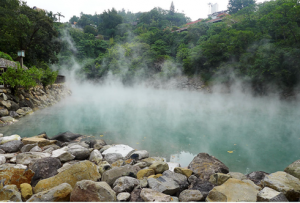
Colonial Culture Route in Old Town Tamsui:
On this tour, we will enjoy a variety of historical sites and the beauty of the sea. Tamsui Old Town is located on the north coast of Taiwan at the outlet of the Tamsui River, the main river flowing through Taipei. Several interesting remnants of Dutch and Japanese colonial architecture remain. We will visit such landmarks as Fort San Domingo (first built in 1629), the Tamsui Customs Officers’ Residence (built in the 1860s), Tamsui Customs Wharf and the Former Residence of Tamsui Mayor Tada Ekichi, which was built during the Japanese colonial period. We will close the day with the stunning river and sea view at this popular leisure destination.
Date: 2023/7/8
Duration: 4 hours (2:30 pm-6:30 pm)
Tour mode: Walking
Cost: 10 euros
Maximum number of participants: 25 people

Tea Pottery Culture and Craftsmanship Route:
On this tour, we will experience the technique and spirit of a master craftsman. Tea bowls were once one of the most important traditional crafts in the life of everyday Chinese people. One particular kind of tea bowl, known as Jian Ware (Tenmoku in Japanese, https://en.wikipedia.org/wiki/Jian_ware) underwent splendid development in southern China over eight hundred years ago, but has faded from prominence over the years. There are now fewer than ten artisans in the world with the skills to produce these bowls in an expert manner, and they are scattered in four countries – China, Taiwan, France and Japan. This humble tea bowl is no longer an everyday object but is now considered a work of art. We will visit the workplace of an artisan on the outskirts of Taipei, in Sanzhi, and experience how this nearly forgotten technique has been reborn in modern times. In addition, we will pay a visit to a Buddhist monastery (Dharma Drum Mountain Nung Chan Monastery), a famous place of spiritual practice nearby.
Date: 2023/7/8
Duration: 3 hours (1:00 pm-4:00 pm)
Tour mode: Tour bus
Cost: 20 euros
Maximum number of participants: 25 people

Free Guided Museum Tours at Academia Sinica
The local committee has organized two identical guided museum tours at Academia Sinica. The two museums in the free tours are the Museum of the Institute of Ethnology and the Museum of History and Philology and they are open to the public. Both tour times will include both museums. For those interested in joining, please be sure to register, and gather directly at the check-in and registration desk of the conference venue at the designated guided tour time.
Date: 2023/7/3 (1:30 pm-3:30 pm) and 2023/7/7 (3:30 pm-5:30 pm)
Duration: 2 hours
Cost: Free
Meeting point: Check-in desk of the conference venue
Maximum number of participants: No limit
Museum of the Institute of Ethnology
Museum of History and Philology
Local Committee
Convener:
Institute of Sociology, Academia Sinica
Website Link
Members (in alphabetical order):
Graduate Institute of Education, Tunghai University
Website Link
Department of Sociology, National Chengchi University
Website Link
Department of Sociology, Soochow University
Website Link
Institute of Ethnology, Academia Sinica
Website Link
Graduate School of Humanities and Social Sciences, Dharma Drum Institute of Liberal Arts
Website Link
Institute of Ethnology, Academia Sinica
Website Link
Graduate Institute of Religious Studies, Fo Guang University
Website Link
Online working groups
1. From Soviet Past to Facebook Present: Actual Issues of Religiosity in Central and Eastern Europe
Time: Wed. 5 July, 10:00-12:00 (CEST)
Convener:
Gergely Rosta
Pázmány Péter Catholic University, Budapest, Hungary
rosta.gergely@btk.ppke.hu
Isorecea, the association of sociologists of religion in Central and Eastern Europe(CEE), usually has a separate session at ISSR conferences on specific issues of religiosity in the region. As only a small number of colleagues are likely to be able to attend the 2023 conference in Taiwan for funding reasons, we are submitting an online working group proposal this time. We received three paper proposals for our internal call, but we are hopeful that more of our members will join us at the conference. The topics of the proposed papers will cover a wide range from gender roles to scientific atheism to the presence of Occultist communities on Facebook. The three papers are linked by the post-communist region and the qualitative approach. Two of the three papers are also put a special emphasis on the Soviet past. We are planning an open working group with hopefully many participants from CEE and outside the region. Our online working group will cover the following topics:
Gender Roles and Family Practices among Pagan Women in Lithuania and Estonia: Between Reconstruction of Tradition and Memories from Soviet Past?
Milda Ališauskienė
Vytautas Magnus University
Liina Kilemit
University of Tartu
The paper discusses the perception of gender roles among pagan women in Lithuania and Estonia, focusing on two case studies. The first case study is the ancient Baltic religious organization Romuva and its teaching and everyday practices among its female members in contemporary Lithuania. The second is the Estonian native faith organization Maausk. This paper aims to analyze the gender roles presented in the teachings of the groups and the way women in both organizations live them. Reconstructive pagan religious groups usually represent a traditionalist worldview, while the impact of feminist ideas is mainly observed within goddess-oriented pagan traditions like witchcraft. The cases discussed in this chapter represent a mixture of the two religious traditions about the perception of gender roles and their lived practices by female members. The paper is based on participant observation and interviews with women members in both organizations, conducted in 2021–2022.
The Relationship of Different Forms of Religiosity to Volunteerism, with Particular Regard to the Aid Provided to War Refugees from Ukraine
Márton Csanády
Károli Gáspár University of the Reformed Church in Hungary
After the Second World War, the Soviet occupation and the communist power destroyed the voluntary organizations in Hungary. (Bibó 1986) Voluntary organizations and active volunteering revived in the 1970s and 1980s. (Hankiss 1982) The regime change of 1990 resulted in another serious crisis in the operation of voluntary organizations. After Hungary became a member of the European Union (2004), the level of participation in the work of voluntary organizations began to increase again (Marinova 2011). In recent decades, members of churches and religious communities have played an important role in the work of voluntary organizations (Csanády 2022). In the past few years, there has been a fierce political struggle regarding the evaluation of the operation of voluntary organizations. This is especially true for helping refugees since the 2015 refugee crisis.
In the course of our presentation, we will try to find answers to the following research questions: (1) Who are the people (in a sociological sense) who voluntarily help the refugees from Ukraine. (2) What is the relationship between different forms of religiosity, belonging to different denominations and the willingness to help refugees?
Our analysis is based on data from a two-part research conducted in August 2022 by the Sociology of Religion Research Team of the Károli Gáspár University. We recorded 250 interviews in the qualitative part, while in the quantitative part, we carried out a nationwide online representative survey in Hungary with 1,200 respondents.
Dominant Religions in Dialog with Scientific Atheism: The Case of Lithuanian and Ukrainian Scientists Born in the USSR
Maria Rogińska
Pedagogical University of Cracow, Poland
The paper concerns the complex interaction of the diverse religious and irreligious contexts in the two CEE countries with different dominant religions –Catholic Lithuania and Orthodox Ukraine –and its influence on the religious imaginary of the natural scientists. This interaction is placed in a context that complicates the picture even more -the common post-Soviet past of both countries. I will explore prerequisites of the Soviet atheistic regime that contributed to the formation of this religiosity, based on interviews with the scientists born in 1930-1960s. After the collapse of the Soviet Union, most of them did not accept Orthodox, Catholic or other institutional religions, but instead created their own privatized religious patterns, using science-related elements in their imaginary. This distinguished them from the other national groups participating in the study. In the paper I propose an interpretation for this phenomenon. I analyze 29 in-depth interviews of a larger sample and focus on the biographies of the older cohort of natural scientists from Lithuania and Ukraine to show how the Soviet political and normative context helped to shape this kind of imaginary.
From “secret” gatherings to Facebook groups: A study case from an Occultist community in Serbia
María Pinal Villanueva
University of Belgrade
The religious field and its practices, like any other social aspect of reality, have always been subject to change due to political and historical circumstances, among others. In the case of the former Yugoslavia (and present-day Serbia) one of those important changes was the introduction of Occultist ideas in the 1970s, in the context of a communist regime. This regime brought with it, among other phenomena, the displacement of religious practices from the public sphere to the strictly private one. It is in this context that some pioneers, among them the psychologist Zivorad Mihajlović Slavinski, began to “import” these Occult ideas for the first time to the region, and spread them publicly. The groups led by Slavinski (Ecclesia Gnostica Alba, Spiritual Technologies) have also changed over time in their practices and activities from their beginnings to the present, without ceasing to have a common thread with their origins and their past. This work examines, through the analytical tools of digital anthropology, the dynamics of these groups in contemporary times, particularly in the field of “digital communities” on the social network Facebook. Understanding the virtual world as an integral part of contemporary life, we will discuss the changes and continuities regarding the notions of community, belonging and religious practices.
2. The (De)sacralized Use of Trance in Our Contemporary Western Societies
Time: Tue. 27 June, 13:00-15:00 (GMT+2:00 Brussels)
Conveners:
Aurélie Giovine
UC Louvain, Belgium
aurelie.giovine@uclouvain.be
Julie Hermesse
UC Louvain, Belgium
julie.hermesse@uclouvain.be
This panel will focus on the use that is made today, in our contemporary societies, of trance practices and more precisely of their “secularized” and “rationalized” uses in an ecological context of daily life. In fact, trance phenomena, which are bodily practices with multiple forms, are “commonly” inscribed in religious contexts associated in particular with possession rites or shamanic logics that question the relationship to the invisible. Today, under the effect of globalization, the practice of trance is invited in our western societies which tend to make it a (de)sacralized tool at the service of the person himself. Having become a place of personal experimentation, trances are used by “trancers” with very individualized objectives: to “discover oneself” through an “other” otherness, to respond to curative needs, to improve one’s social relations, to “disconnect” from the reality of daily life…If the trance experience remains subjective and singular to each experience, it is generally characterized by a dissolution of the body and a loss of spatio-temporal reference points. Trances thus open a liminal space (and at the same time connecting) between the person and his material environment, between his body and his spirit, between his person and the “others” through an “other” materiality, that of the sensory, of the body. The purpose of this panel will be to open a space for discussion around this “westernized” use of trance and the questions it raises, particularly the individual logics underlying its voluntary and daily use: What transformations can the use of trance bring about concerning the corporeality of the person and his or her relationship to others? What impact can it have on the way we think about ourselves, our being-in-the-world, our identity? What about the very concept of otherness? Can we speak of a questioning of our “traditionally” accepted Western ontologies?
Approche anthropologique de la transe comme pratique de soin (dé)sacralisée
Aurélie Giovine
Laboratoire Anthropologie Prospective
aurelie.giovine@uclouvain.be
Dans nos sociétés occidentales contemporaines, les pratiques corporelles de transe s’inscrivent dans un contexte du quotidien comme lieu d’expérimentation personnelle. Ces pratiques sont alors utilisées par les « transeurs » avec des objectifs individualisés : se découvrir soi à travers une altérité « autre », répondre à des besoins curatifs, améliorer ses relations sociales, se déconnecter de la réalité du quotidien…Si l’expérience de la transe reste singulière à chaque vécu, les transes ouvrent alors un espace liminal (et à la fois reliant) entre la personne et son environnement matériel, entre son corps et son esprit, entre sa personne et les « autres » à travers une « autre » matérialité, celle du sensoriel, du corporel. Cette présentation proposera des résultats préliminaires de cette recherche quant à l’intérêt que suscitent les pratiques de transe aujourd’hui, dans nos sociétés occidentales contemporaines. Elle s’appuiera sur un terrain réalisé en Belgique et en France sur base d’une part, de récits de transe rédigés par des transeurs eux-mêmes ainsi que sur les premiers entretiens réalisés auprès de ces personnes. Cette analyse préliminaire permettra de questionner les enjeux qui soutiennent cette pratique corporelle mais également les impacts possibles sur la personne concernant sa présence au monde, avec les autres et avec soi-même.
« Zoographier » les entités. Le rôle des animaux totémiques dans le néo-chamanisme européen.
Denise Lombardi
GSRL(UMR 8582), CNRS/EPHE-PSL
lombardi.denise@gmail.com
Les séminaires néo-chamaniques sont à considérer comme des pratiques spirituelles à visée thérapeutique qui mettent en œuvre des savoirs dits « indigènes », et se sont diffusées rapidement partout dans le monde à partir des années 1980-1990, indépendamment de toutes références historiques et culturelles locales. Les participants aux séances de néo-chamanisme en France sont le plus souvent accoutumés à ce type de pratiques et recherchent des parcours individuels au sein de ces nouveaux systèmes de sens. Ceux-ci permettent un cheminement qui vise à retrouver un bien-être personnel essentiellement psychique et physique. (Lombardi, 2018, 2021, 2022 ; Ghasarian, 2006). Les pratiquants manifestent ainsi une intentionnalité individuelle importante, avec une adhésion variable envers ces pratiques, modulée sur la base des différentes étapes de leur vie et construite grâce à une modalité cumulative avec d’autres expériences similaires. C’est grâce à cette accumulation expérientielle que les passionnés de nouvelles spiritualités construisent leur croyance envers des pratiques non historicisées et délocalisées. Cette croyance demeure toujours en devenir et elle participe d’une construction de soi nécessaire aux individus afin de faire face, de manière singulière, aux moments de crise existentielle typiques de la vie intérieure de chacun. Comme dans tout rituel, c’est seulement à travers l’engagement de la pratique corporelle que les participants peuvent avoir une expérience directe de l’action rituelle (Houseman 2012). C’est alors que le corps devient le territoire ; c’est dans le corps que les participants peuvent sentir, percevoir, voir, toucher et interagir de manière sensorielle avec l’animal guide. C’est à l’intérieur de soi-même qu’ont lieu l’exploration et la recherche des infra-mondes habités par d’innombrables entités. À travers son propre corps le sujet entre dans un panthéon hanté d’images, de souvenirs, de figures qui appartiennent autant au vécu du pratiquant qu’à ses capacités imaginatives guidées par le néo-chamane ; l’ensemble de ces entités, dans la mesure où celles-ci peuvent être expérimentées physiquement, sont censées avoir une place dans la vie ordinaire de l’individu. À travers cette territorialisation du corps, les pratiquants peuvent réussir à intégrer dans leur vie quotidienne le panthéon imaginatif peuplé par les animaux-totémiques ou animaux-guide, construit au moment des séminaires néo-chamaniques. L’incorporation de l’animal-guide, permet aux participantes de faire l’expérience de la présence d’un être non humain ou spirituel ou immatériel qui s’installe dans leur vie, et plus précisément encore dans leur corps. Cette communication sera l’occasion pour démontrer comment on peut considérer les animaux totémiques en tant que entités qui contribuent à construire une ontologie de la liminalité en étant en même temps à l’intérieur de chaque un, car c’est dans sa propre intériorité qu’ils faut les rechercher, mais en même temps ces êtres peuvent être imaginés car existants dans un monde réel, ou on considère en tant que réel un univers féérique peuplé par des licorne par exemple ou de chimères, car l’imagination est partie entière de la réalité des sujets, et il y a peu de choses autant réelles que l’imagination.
« Travailler avec les plantes ». Pratiques traditionnelles et modernité auprès des Shipibo de l’Amazonie Péruvienne
Silvia Mesturini
Laboratoire Anthropologie Prospective
silvia.mesturini@cnrs.fr
Les Onanya sont compris et traduits, selon les contextes, comme étant des guérisseurs ou des charlatans, des sorciers diaboliques ou des sages indigènes. Ils se définissent eux-mêmes comme « ceux qui savent travailler avec les plantes », les Rao, qu’ils reconnaissent comme curatives et enseignantes. La compétence des Onanya traditionnels est issue de dizaines d’années d’apprentissage pendant lesquels ils comprennent comment établir, entretenir et transmettre des relations de collaboration complexes avec au moins une centaine de Rao et d’autres êtres qui habitent la forêt. L’ontologie, l’éthique et l’intégrité qui accompagnent ces relations sont porteuses d’une écologie et d’une cosmopolitique particulières (I. Stengers) qui décrivent et prescrivent s’inscription dans un milieu donné et la bonne entente avec d’autres êtres, humains et non-humains. Parmi les préparations faites avec les Rao, une décoction particulière à base d’au moins deux plantes, est absorbée afin de pouvoir visionner et ainsi diagnostiquer les causes d’infortunes et maladies de personnes, familles et communautés. Cette substance, qui est connue et utilisée parmi de nombreuses ethnies Amazoniennes, connaît aujourd’hui, sous le nom d’ayahuasca, un essor international, commercial, spirituel et thérapeutique croissant. Dans le cadre de cette communication, nous allons montrer comment les exigences d’une nouvelle clientèle globalisée et l’ontologie « moderne » qu’ils véhiculent (B. Latour) réduit la complexité des savoirs et pratiques Shipibo à l’ingestion d’une seule substance (désormais qualifiée de psychédélique) et aux expériences “d’altération de la conscience” individuelles qui lui sont associées tout en évacuant, progressivement, le savoir autochtone traditionnel et ses experts.
3. Routes to Religions: Circulation of Imaginaries and Reconfigurations of Communities on the Roads of Eurasia
Time: Wed. 3 July 15:00 Amsterdam, Berlin, Rome, Stockholm, Vienna
Convener
Thibault Fontanari
UCLouvain
thibault.fontanari@uclouvain.be
Convener
Carolin Maertens
LMU München
carolin.maertens@rcc.lmu.de
Transport and Miscommunication: Road Construction and Sikh Militant Separatism
Davindar Singh
Harvard University
davindarsingh@g.harvard.edu
A long history of aspirational developmental literature from the colonial era to the present — and an equally long history of academic publication — argues that the expansion of South Asian transportation infrastructure entails the expansion of conceptual and national unity. A common belief in the power of shared transportation to unify once disparate publics unites the disparate literatures of colonial administrative documents, technocratic developmental speculation, pioneering historical scholarship on South Asian rail, and romantic paeans to bus-borne and truck-borne life on Indian highways. This paper proposes contemporary Sikh militancy and the economic regionalism fueling it as counterpoints to the aforementioned writings, lay and scholarly, on infrastructurally-mediated unity. Evidence from the last 140 years suggests the sociotechnical engineering that expanded road transport and market relations both continues today and compels contemporary Sikh political unrest. Linking colonial documents to ethnographic work conducted with Punjabi commercial drivers, infrastructure-focused bankers and investors, and upper-echelon administrators, I show that contemporary expansion of Indian road infrastructure is but one financialized instantiation of a long history of attempts to concurrently expand supply chains, expand credit relations, and “expand” the minds of the peasants underpinning both. I then use this material to contextualize ethnographic evidence gathered with Sikh militants working in commercial transport, indicating that new roads and their decay provide militants an easy site to discursively link transnational logistical politics, regionalized agrarian unrest, “corruption” within India’s federalized administrative apparatus, and contemporary Sikh militant separatism. This separatism is the opposite of the social connections roads ostensibly compel.
Routes to Roots: Ceremonial Walking and Bioregionalism in Kodagu, India
Subarna De
University of Groningen
s.de@rug.nl
John Muir, the Scottish-American naturalist, reminds us of the potentiality of walking trails and its relationship with the wilderness. Rebecca Solnit, an American writer and an environmentalist, argues that walking as a metaphor evokes cross-disciplinary discussions, particularly from anthropology, geography, literature, anatomy, cultural history and many more. Theorising walking trails, roads and pathways, collectively known as routes, within the domain of bioregional studies increasingly means looking at how routes engage with roots, that is, history, nature, and culture of place and community to ‘live-in-place’ and ‘reinhabit’ the bioregion. Living-in-place and reinhabitation are bioregional concepts that take on a place-based approach to consider the specificities of place and aim towards restoring the land for long-term survival. This paper aims to theorise Kodagu’s routes within the domain of bioregionalism. In doing so, this paper studies the two traditional Kodava rituals of Kailpodh, the hunting festival, and Puthari, the harvest festival, to argue how the ceremonial walking practices of the indigenous Kodava people in the Kodagu coffee district situated in the Western Ghats in the Indian subcontinent engage with the historical memory of the place to contribute to contemporary community building and reinhabiting the Kodagu bioregion.
Walking Along “the Road to China:” Routine Circulations and Their Imaginary Distinctions in Eastern Afghanistan
Tobias Marschall
Geneva Graduate Institute
tobias.marschall@graduateinstitute.ch
At the edge of Central and South Asia, the Afghan Pamirs appear on the map as an extraordinarily difficult-to-reach borderland. The Afghan Pamirs resemble colonial “anomalies;” they are the leftovers from the original designs of a buffer zone between Tsarist and British empires. More than a century of military and scientific exploration, adventure, scholarship, documentary – and tourism more recently – shaped the form and concrete contours of their imaginary constitution. The mobilisation of remoteness, radical difference or alterity – grounded in static distinctions between a “here and there,” “us and them,” often resumed in national, ethnic, and religious labels – is constantly perplexed in everyday interactions, alliances, transversal ties, migration and in routine circulation patterns. Categories, images, and boundaries of solidarity appear thus rather contingent to the everyday concerns and patterns of circulation that make the principal substance of inhabitants’ lives. Latest construction of a road stretch to upland pastures revived aspirations to connectivity and integration to China echoing Silk Road imaginaries. However, the road turned out to be more of an internal project of national interest and stakes. Because of their important experiential variety, circulations in the Afghan Pamirs convey an uneven but pervasive sense of remoteness and radical alterity that rather translates the dynamics of a power relation. Hence the stickiness of a nomadic disposition in speech and practice where migration stands as an always open and substantial option. Spectacular and expansive feasts or the state legal sanction by mid twentieth century of the office of the Khan, are not exemplars of the stickiness of traditions in a place out of time. They are part of a different political aspiration, where a particular form of staged autonomy appears as a deliberate choice. The demonstrated capacity to stand or opt out is representative, pace appearances, of an ambiguous defiance to state spatial or territorial confinement. Conceiving the inquiry as a walked ethnography, this paper considers the spatial and material ways routine and established forms of circulation, their distinctions and imaginaries carved the way to and merge with global interventions. Seen from upland, the dominant view of a place bypassed by global trends materialising along heightened circulation and exchange conduits poorly reflects the effective centrality and extent of movements within and across the Afghan Pamirs’ boundaries.
On the Road, from Evils to Heaven: Souls’ Journeys of the Kulung Rai from the Nepalese Himalayas.
Grégroire Schlemmer
schlemmergreg@hotmail.com
Among the Kulung Rai of eastern Nepal, as elsewhere, paths facilitate the movement of humans, but also of the spirits and gods that often accompany them. This fact is reflected in the importance of ritual journeys. They consist in bringing back harmful spirits to their place of origin, by mentioning each stage of their journey. These journeys, as well as the location and type of settlement of their destination, inform us about the ancient geo-politics of this population. The importance of the paths in the diffusion of religious phenomena is also illustrated by the emergence of a singular practice: at the beginning of the 20th century, the Kulung rai began to build resting places along the paths. These places, flanked by a commemorative stone, are made in the name of the dead, in order to facilitate their access to another road: that of paradise. This practice is singular in that it is both specific to the ethnic group to which they belong, and at the same time clearly built on borrowings from the great Buddhist and Hindu traditions. We will then put forward the idea that religion, in the sense of dharma, was introduced to the Kulung with the development of the roads.




























